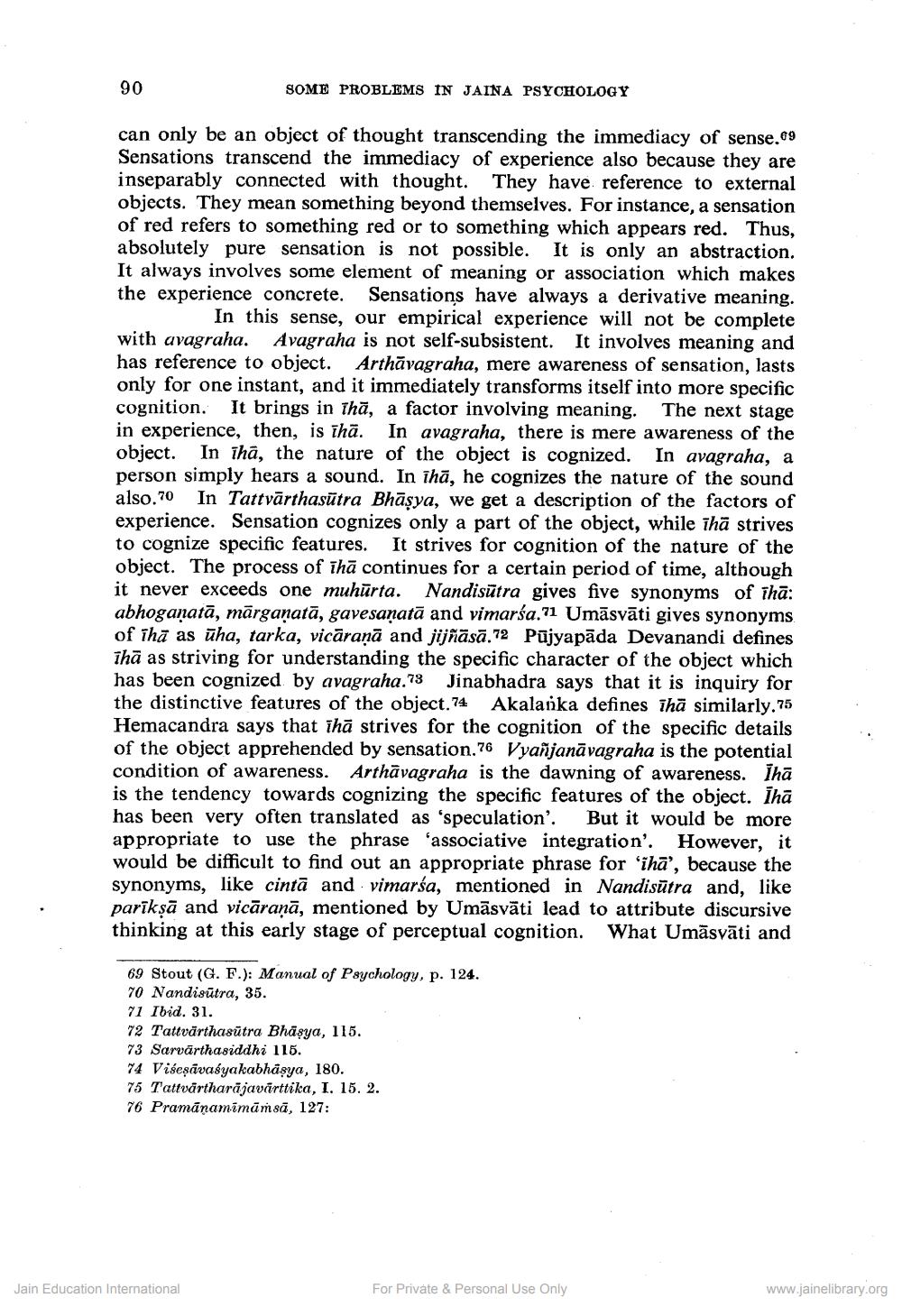________________
90
SOME PROBLEMS IN JAINA PSYCHOLOGY
can only be an object of thought transcending the immediacy of sense.69 Sensations transcend the immediacy of experience also because they are inseparably connected with thought. They have reference to external objects. They mean something beyond themselves. For instance, a sensation of red refers to something red or to something which appears red. Thus, absolutely pure sensation is not possible. It is only an abstraction. It always involves some element of meaning or association which makes the experience concrete. Sensations have always a derivative meaning.
In this sense, our empirical experience will not be complete with avagraha. Avagraha is not self-subsistent. It involves meaning and has reference to object. Arthāvagraha, mere awareness of sensation, lasts only for one instant, and it immediately transforms itself into more specific cognition. It brings in Thā, a factor involving meaning. The next stage in experience, then, is īhā. In avagraha, there is mere awareness of the object. In ihā, the nature of the object is cognized. În avagraha, a person simply hears a sound. In ihā, he cognizes the nature of the sound also.70 In Tattvārthasūtra Bhāşya, we get a description of the factors of experience. Sensation cognizes only a part of the object, while ihā strives to cognize specific features. It strives for cognition of the nature of the object. The process of ihā continues for a certain period of time, although it never exceeds one muhūrta. Nandisutra gives five synonyms of ihā: abhoganatā, mārganatā, gavesanatā and vimarśa. 21 Umāsvāti gives synonyms of ihā as ūha, tarka, vicāraņā and jijñāsā.72 Pūjyapāda Devanandi defines ihā as striving for understanding the specific character of the object which has been cognized by avagraha.73 Jinabhadra says that it is inquiry for the distinctive features of the object. 74 Akalanka defines ihā similarly. 75 Hemacandra says that ihā strives for the cognition of the specific details of the object apprehended by sensation.76 Vyañjanāvagraha is the potential condition of awareness. Arthāvagraha is the dawning of awareness. Thā is the tendency towards cognizing the specific features of the object. Ihā has been very often translated as 'speculation'. But it would be more appropriate to use the phrase 'associative integration'. However, it would be difficult to find out an appropriate phrase for 'ihā', because the synonyms, like cintā and vimarśa, mentioned in Nandisütra and, like parīksā and vicāranā, mentioned by Umāsvāti lead to attribute discursive thinking at this early stage of perceptual cognition. What Umāsvāti and
69 Stout (G. F.): Manual of Psychology, p. 124. 70 Nandisutra, 35. 71 Ibid. 31. 72 Tattvārthasūtra Bhäsya, 115. 73 Sarvärthasiddhi 115. 74 Viseşāvasyakabhâsya, 180. 75 Tattvärtharajavarttika, I. 15. 2. 76 Pramānamimāṁsā, 127:
Jain Education International
For Private & Personal Use Only
www.jainelibrary.org




